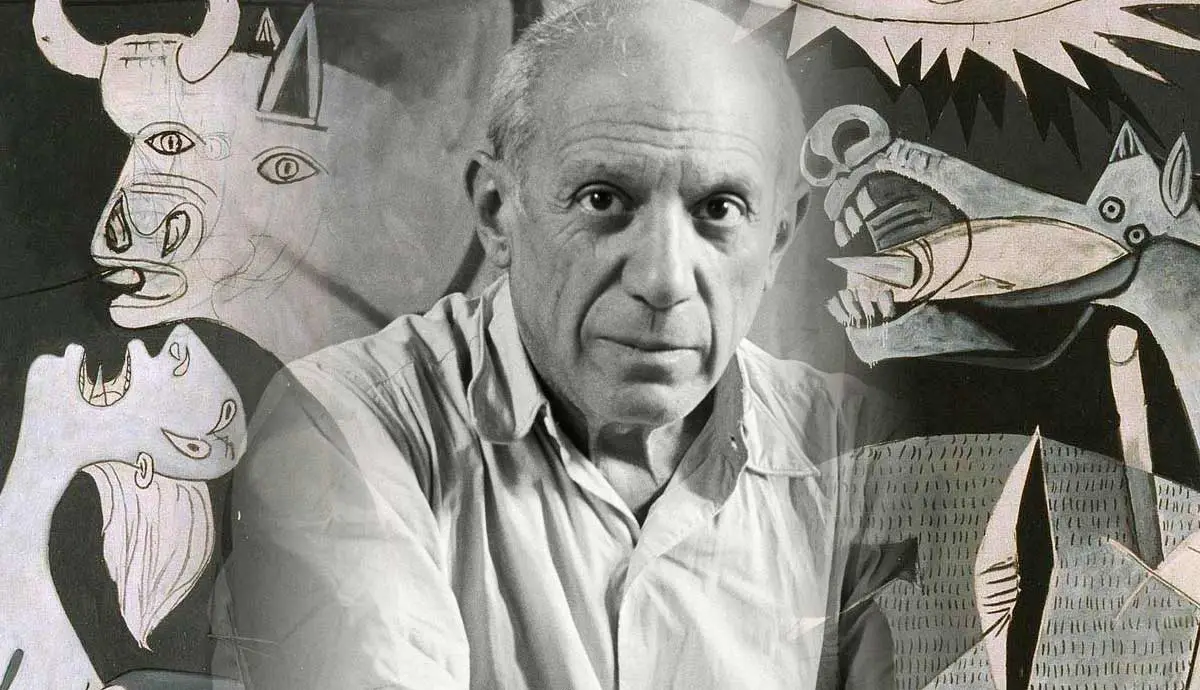Pablo Picasso, a name that resonates with the very essence of creativity and passion, was not just an artist; he was a visionary, a trailblazer who dared to defy conventions and reshape the world of art. Born in Spain in 1881, his journey transcended mere existence; it was a profound exploration of the human soul through the medium of art. Join me as we delve into the life, works, and profound legacy of this enigmatic genius.

Early Life and Education
Birth and Childhood
Artistic Beginnings
In the heart of Malaga, Spain, on a warm October day, Pablo Picasso came into the world, his cries echoing the promise of brilliance yet to unfold. From a tender age, he displayed an innate talent for art, his sketches imbued with a depth that belied his years. Despite humble beginnings, Picasso’s artistic spark ignited a flame that would illuminate the darkest corners of the human experience.
Artistic Style and Innovations
Cubism: Redefining Reality
Blue and Rose Periods: Embracing Emotion
Surrealism: Exploring the Subconscious
Picasso’s artistic journey was a kaleidoscope of innovation and experimentation, each brushstroke a testament to his restless spirit. In the realm of Cubism, he shattered the constraints of reality, fragmenting forms and perspectives to reveal the essence of existence itself. His Blue and Rose Periods, steeped in melancholy and passion, laid bare the raw emotions of the human condition. And in the embrace of Surrealism, he delved into the depths of the subconscious, unlocking hidden truths and untold mysteries.
Key Works and Masterpieces
Guernica: Symbol of Human Suffering
Les Demoiselles d’Avignon: Bold and Controversial
The Weeping Woman: Pain and Grief
Through his masterpieces, Picasso transcended the canvas, speaking directly to the hearts of humanity. “Guernica,” a haunting portrayal of wartime atrocities, stands as a solemn tribute to the resilience of the human spirit in the face of unfathomable suffering. “Les Demoiselles d’Avignon,” with its stark portrayal of fractured bodies and distorted faces, challenged societal norms and ignited fierce debate. And in “The Weeping Woman,” Picasso captured the anguish and despair of a world torn apart by pain and grief.
Legacy and Influence
Impact on Modern Art
Continued Relevance Today
Picasso’s legacy extends far beyond the confines of his era, his influence transcending time and space. His bold experimentation and fearless innovation continue to inspire artists of all disciplines, reminding us of the boundless potential of the human imagination. From the streets of Paris to the galleries of New York, Picasso’s presence looms large, a guiding light for those who dare to dream and create.
Personal Life and Relationships
Romantic Affairs and Marriages
Family Dynamics
But behind the canvas lay a man, flawed and vulnerable, navigating the complexities of love and relationships. Picasso’s romantic affairs and marriages were as tumultuous as they were passionate, each union leaving an indelible mark on his art and his soul. And amidst the chaos of his personal life, his relationships with family and friends offered moments of solace and connection, grounding him in the midst of his creative whirlwind.
Conclusion
Pablo Picasso’s life was a symphony of emotion, his art a reflection of the human experience in all its glory and despair. Through his unyielding passion and boundless creativity, he transcended the confines of time and space, leaving an indelible mark on the world of art and beyond. As we gaze upon his works, we are reminded of the power of art to move us, to inspire us, and to connect us to something greater than ourselves.
Unique FAQs About Pablo Picasso
- Was Picasso always successful during his lifetime?
- While Picasso achieved fame and recognition during his lifetime, he also faced periods of financial struggle, especially in his early years as an artist.
- What motivated Picasso to experiment with different artistic styles?
- Picasso’s relentless pursuit of artistic innovation was fueled by a desire to push boundaries, challenge tradition, and explore new ways of seeing the world.
- How did Picasso’s personal life influence his art?
- Picasso’s tumultuous personal life, marked by passionate love affairs and complex relationships, often found expression in his art, imbuing it with emotional depth and intensity.
- What was Picasso’s relationship with other famous artists of his time?
- Picasso had friendships and rivalries with several prominent artists, including Georges Braque, Henri Matisse, and Salvador Dali, each of whom influenced and inspired his work in unique ways.
- What is Picasso’s most famous quote?
- Picasso famously said, “Every child is an artist. The problem is how to remain an artist once we grow up,” highlighting his belief in the innate creativity within every individual
